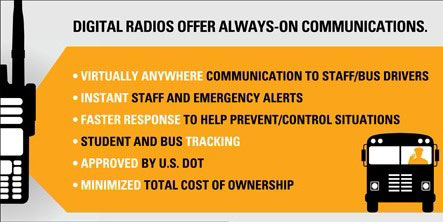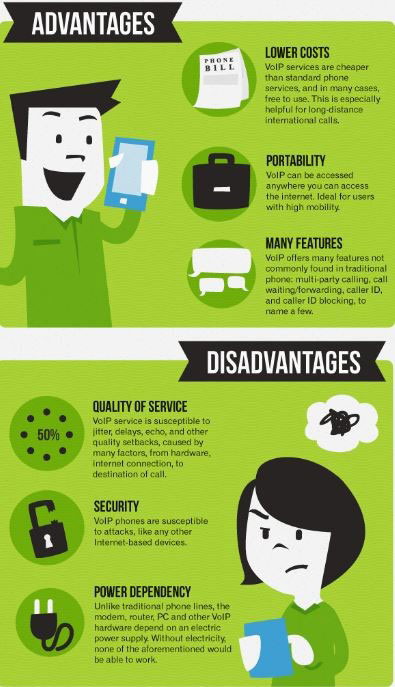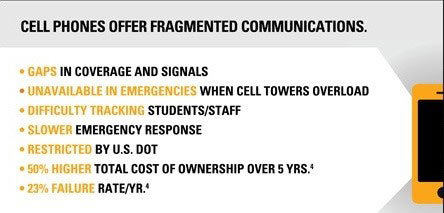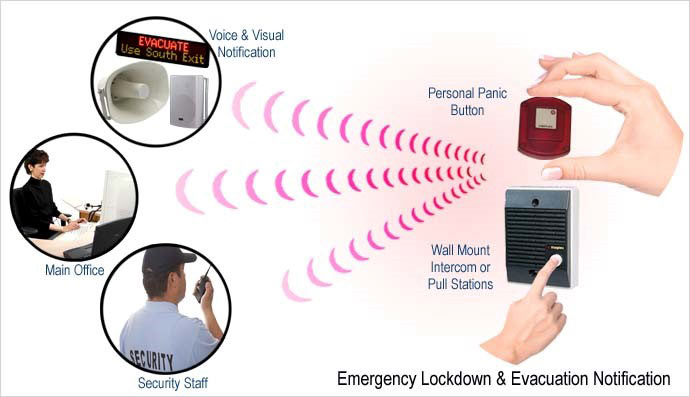This brief guide shows you ways to save the staff, faculty and students for whom you are responsible.
In the event of an emergency, your faculty and staff members can be heroes or scapegoats.
Preparing for an emergency is essential. A strong communication-plan is the backbone.
Please read and implement this guide, make adjustments for your school, then feel free to share it with appropriate staff.

When 20 year-old Adam Lanza fired his way into Sandy Hook Elementary School and massacred 20 students in 2014, the nation was shocked and appalled. What happened? Was communication before, during, and after the emergency what it should have been?
This emergency brought to light just how important effective and open communication is. After the state of emergency subsided, one Newtown parent of a dead child called for better communication. Sadly, his family was not included in the post-shooting sharing of information. Had an effective method for contacting that parent been established and implemented, unnecessary distress could have been avoided.
Appropriate communication is a critical part of handling a crisis. And, in order to communicate appropriately, schools need an emergency communications plan.
This plan must eliminate uncertainty and establish protocol. It should include a variety of methods of communication you and your staff can use. Education on methods is imperative. Open communication to the right parties can save lives, and it can save you from the most excruciating apology you'll ever have to make: the apology to that parent or staff member who was left out-or misinformed.
Developing a plan
The first step to developing a communications plan is to create a crisis management team. This team will be the ones to plan communications procedures for your school, to help build your emergency toolkit, to make executive communications decisions when emergency occurs, and to handle communications post-emergency.
Your team should include key members of your staff, and include representative members from external organizations, including the Police Department, Fire Department, County Emergency Rescue Services, and Mental Health Services.
The Crisis Management Team will assist you in developing your site-specific plan based around different scenarios, and they will assist in educating other staff and students on the methods of communication you will learn about here in this guide.
In this way, you can exercise total control over the communications protocol. Establishing protocol and training the entire staff starts with your team. The goal is for each teacher, and other staff members, to be fully prepared to discuss the methods of communication with students. They will furthermore be able to educate students on emergency procedures that have been established by yourself and your team.
The following will walk you through different methods of communication. You can employ these methods for effective internal and external communications during an emergency at your school. Identifying protocol for using these methods, including identifying specific scenarios where a particular method is appropriate, is one of the initial steps your team will take during pre-planning.
Methods of Communication
Telephone
Landlines
- Telephone calls are often the first go-to during an emergency. For pre-planning, consult the phone company. There may be unused lines in the control panel you can activate during an emergency.
- Many schools do not have enough lines set up to deal with the high volume of calls that are necessary-especially post-emergency. Set up at least one line with an unpublished number. Phones with unpublished lines are useful for dialing out and will not be blocked with incoming calls.
- Mark phone jacks clearly. Emergency service personnel may need to access free jacks. Include location of jacks in school floor plan.
- Program all phones with instant dialing shortcuts. Post a list identifying emergency contacts and their instant dial number near all phones.
- Set up a Telephone Chain (see example below) that establishes contact priority. The building administrator initiates the Telephone Chain. When school is in session external links of the chain will be notified first. When school is out of session both internal and external links will be notified.
- In the event of a disaster that damages the telecommunications network, landlines will not work. Make sure staff members have access to alternative methods of communication, such as walkie-talkies (see Two-Way Radio section).
Cellular Phones
- Provide all staff with a list of important numbers to include in their contacts.
- Make sure all staff members have active cell phones when they are off-campus for any reason, especially field trips.
- A list of FEMA texting resources, such as notifications about open emergency shelters and disaster recovery centers.
- In the event of a disaster that damages the telecommunications network, cell phones will not work. Make sure staff members have access to alternative methods of communication, such as walkie-talkies (see Two-Way Radio section).
| Community Resource |
Community Resource |
Feeder School Contact |
Feeder School Contact |
Community Resource |
Community Resource |
Special Program Coordinator |
Division- specific Appointee |
Two-Way Radios
- Two-way radios are imperative for emergency communications, particularly if there is a power outage
- If possible, include a walkie-talkie in each classroom and other locations based on your school's layout. Optimize for accessibility. Walkie Talkies for Schools.
- All staff should know location of two-radios, how to use them, and who to contact first.
- You may want to consider establishing a simple code language your staff can use on two-way radios. However, during extreme emergencies the clearest, most common, to-the-point language should be used.
- You may want to consider including a brief, step-by-step user guide with pictures where the radio is located in case someone who is unfamiliar with it has to use the radio
- You can establish a talk group that includes everyone with access to a radio in the school. This will minimize time to broadcast important messages.
- Pre-set all radios to the same channel.
- Mark location of radios on school floor plan for emergency personnel. Check radio batteries on a regular basis.
- Include radios in your school's Emergency Toolkit.

www.motorolasolutions.com/mototrbo
Intercom System
- Post instructions for intercom use next to controls in the office.
- You cannot use the intercom unless you have access to the controls. Power outages and structural damage can limit access. For group communications between staff, two-way radios and cell phones are more practical.
- Develop a list of scenarios during which staff and children should expect to get instructions over the intercom.
- In case of staff incapacitation, students should be taught how to use the intercom.
- Administrator should conduct test evacuations similar to fire drills in order to accustom students and staff to procedures. Deliver instructions over intercom after alarm sounds.
- How intercoms help with school security
Alarm System
- Highly audible alarm bell/buzzer should sound in different ways based on different types of emergencies
- Staff and students should be educated on what each alarm pattern means
- Alarm patterns should be easy to recognize and not overly complex
- Technology exists for incorporating mass notification into new fire alarm systems.
Panic Button
- A panic button is a silent alarm that immediately contacts law enforcement and emergency personnel in case of an emergency.
- If your school does not have one yet, consider installing a panic button in an appropriate location.
- Or, there is wireless panic button technology available. Staff members carry a pendant that can go anywhere they go, and a base unit is located in the office.
- You can choose to send the signal to local first responders, or to the National Monitoring Center, where operators assess the nature of the emergency and pass along the call to appropriate responders, such as the National Guard.
Bullhorn/Megaphone
- Megaphones are useful for capturing a crowd's attention.
- A bullhorn is only as good as its batteries. Make sure to check batteries on a regular basis.
- Include a megaphone in your emergency toolkit.
Internet
- Increasingly, social media is becoming a good method for communicating with students. You can craft social media announcements and emails to communicate accurate and pertinent information post-emergency.
-
VoIP (Voice over Internet Protocol) is a resource for making phone calls even when traditional phone lines are down. To use VoIP, place an adapter in between a phone and broadband connection. Or, if there are sufficient funds, you can choose to provide staff with VoIP-enabled phones.

- The FCC's Consumer Guide for VoIP and 911 services details concerns over the use of VoIP and calling 911. As part of pre-planning, contact your VoIP service provider with locational information.
- In the event of a disaster that damages the telecommunications network, or if internet traffic is too heavy, VoIP will not work. Make sure staff members have access to alternative methods of communication, such as walkie-talkies (see Two-Way Radio section).
Sign Language
-
 For maximum preparedness, educate staff and students on Sign Language they can use in an emergency. This will prepare them to help hearing-impaired students and other special needs students who have learned Sign Language.
For maximum preparedness, educate staff and students on Sign Language they can use in an emergency. This will prepare them to help hearing-impaired students and other special needs students who have learned Sign Language. - For more information on Sign Language visit the American Sign Language University site.
Hand Signals
- Make sure your team knows universal hand signals to direct students in an emergency.
- The following is an example list of signals.
- Waving arms - indicates students should follow teacher or administrator
- Palms down - indicates students should get down on the ground
- Palms out - indicates students should stop and stay where they are
- Waving arms side-to-side - indicates students should take shelter at edges of playground
Fax
- In case of a medical emergency, release of information forms, important medical information, and other pertinent forms can be quickly faxed
- In case of off-campus accidents, lists of students and faculty involved, as well as important telephone numbers and other contact info can be quickly faxed
- Make sure important fax numbers are posted along with instructions on how to use the machine wherever fax machines are located for faculty use
Assessing the Aftermath
After emergency conditions have subsided, rally your team. Your team can and should include individuals prepared to speak to the 3 P's: press, parents, and police. Additionally, these individuals should be prepared to speak with mental health agencies and special needs agencies.
Coping with the aftermath of a crisis will require sensitivity, persistency, consistency and certainty from yourself and your team. If time allows, sit down and run through checklists. Make sure all the individuals who need to be contacted first are checked off the list, and members of the team are specifically assigned to initiate contact.
How your team responds to a crisis will, in many ways, determine how the outside world views that crisis.
- Designate a spokesperson most familiar with the events
- Draft and distribute a fact sheet that balances the public's right to know with the privacy rights and security of the individuals affected
- Notify key constituencies including but not limited to the following
- Board of Education
- Law enforcement agencies
- Administration, faculty and staff
- Students
- Parents of students
- Local community
- Local and national media
- Foundation Board of Directors
- State Office of Education and other government entities
- PTA, school community councils, booster clubs, or other associations/organizations
- Assign Crisis Communications Team members to communicate the facts
- Establish a Crisis Command Center if the emergency is critical enough to need one
- Alert the media through a press conference
- Determine photography needs as a means of documenting the situation for evidence
- Develop pre-taped radio responses, if necessary
- Designate other spokespersons based on need and knowledge
- Establish an internal communications strategy
- Discuss alternative communications such as emails, bulletins, etc
- Control Rumors if you deem necessary, by establishing a dedicated line through which people can glean information
- Collect media clippings as further documentation
- Determine the necessity of outside help, such assistance from National School Public Relations Association, based on the severity of the crisis
- Determine meeting schedule for further crisis team meetings
The following are some external resources for emergency preparedness:
Homeland Security News: Emergency Communications
Ready.gov: Free Emergency Preparedness Publications
Basic Disaster Supply Kit
For kids:



